A male mouse model for metabolic dysfunction-associated steatotic liver disease and hepatocellular carcinoma
- PMID: 39090079
- PMCID: PMC11294468
- DOI: 10.1038/s41467-024-50660-y
A male mouse model for metabolic dysfunction-associated steatotic liver disease and hepatocellular carcinoma
Abstract
The lack of an appropriate preclinical model of metabolic dysfunction-associated steatotic liver disease (MASLD) that recapitulates the whole disease spectrum impedes exploration of disease pathophysiology and the development of effective treatment strategies. Here, we develop a mouse model (Streptozotocin with high-fat diet, STZ + HFD) that gradually develops fatty liver, metabolic dysfunction-associated steatohepatitis (MASH), hepatic fibrosis, and hepatocellular carcinoma (HCC) in the context of metabolic dysfunction. The hepatic transcriptomic features of STZ + HFD mice closely reflect those of patients with obesity accompanying type 2 diabetes mellitus, MASH, and MASLD-related HCC. Dietary changes and tirzepatide administration alleviate MASH, hepatic fibrosis, and hepatic tumorigenesis in STZ + HFD mice. In conclusion, a murine model recapitulating the main histopathologic, transcriptomic, and metabolic alterations observed in MASLD patients is successfully established.
© 2024. The Author(s).
Conflict of interest statement
The authors declare no competing interests.
Figures
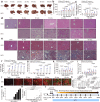
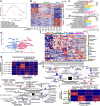
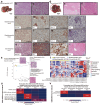
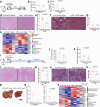
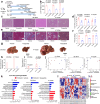
References
-
- Rinella, M. E. et al. A multisociety Delphi consensus statement on new fatty liver disease nomenclature. J. Hepatol.79, 1542–1556 (2023). - PubMed
-
- Powell, E. E., Wong, V. W. S. & Rinella, M. Non-alcoholic fatty liver disease. Lancet397, 2212–2224 (2021). - PubMed
-
- Younossi, Z. M. et al. The economic and clinical burden of nonalcoholic fatty liver disease in the United States and Europe. Hepatology64, 1577–1586 (2016). - PubMed
MeSH terms
Substances
Grants and funding
LinkOut - more resources
Full Text Sources
Medical
Molecular Biology Databases

